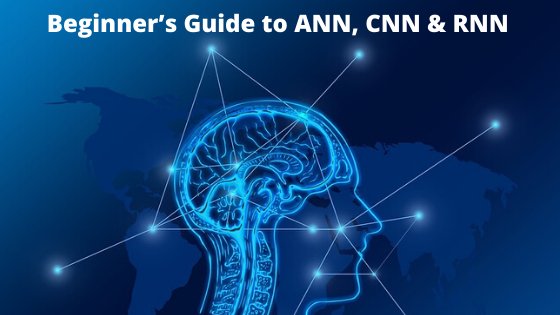We all heard the adage “art imitates life” but technology is imitating life on a larger level now. We are not talking about science fiction but rather the emerging technological landscape where Artificial Intelligence is the buzzword.
AI is not a lexicon anymore, it’s an all-encompassing world of rapidly evolving technology. AI isn’t just Tony Stark fighting Thanos, it’s the one that guides Netflix to offer recommendations based on your viewing history or the self-driven Tesla at your home, AI is ever-present in our lives.

The best AI systems are all been based on a methodology called Deep learning, you might have heard another word- Neural Network if you have been reading up on AI. Neural Network is another word for deep learning and has helped in the rapid evolution of AI and is spearheading the next stage of AI development.
In this article, we are going to take a nuanced look at Neural Networks’ various components and how it’s shaping the rapid progress of AI technology. It’s a widely embraced machine learning algorithm for data scientists and machine learning experts, so it’s now a part of any learning process for eager students itching to make a mark in the AI field.
So, we are gonna go inch-inch and help you get a finer grasp of the vast scope of a Neural Network.
3 Core components of Neural Network-
- ANN- Artificial neural network
- CNN- Convolutional Neural Networks
- RNN- Recurrent neural network
What are Artificial Neural Network
Machine Learning is a key aspect of AI development and it’s no surprise to see a large number of enrollment of students in the learning programs that have Artificial Neural Network as one of the pillars of learning.
So, we all can get the gist that a Neural Network can be interpreted as systems that are inspired by how the brain works. Artificial Neural Network or as we call it ANN in abbreviated forms has its humble origins in the late 19th and 20th centuries but has taken a leap forward in the lexicons of everyone be it the comics or the career of an inspiring AI scientist.
Artificial Neural Network is all about imbibing the pattern of learning the same way the human brain works. Does it look like a Science fiction concept straight out of Marvel Books? Nope, it’s a common term for everyone in the AI world.
How do Artificial Neural Networks learn?
Well, so yes in a way ANN imitates the working of the brain. The human brain has over billions of nerve cells called neurons and is connected to other cells by axons. Stimuli from the external environment or the inputs from the sensory organs in the body are accepted by dendrites in the brain. The inputs form electric impulses traveling through the vast neural network in the brain and communicate with the other neurons.

So why am I doing a brain neural network analysis while telling the techie world about ANN? Because ANN is Artificial Reconstruction of a brain’s neural network. Let me break it down quickly for you:
Artificial Neural Networks consist of multiple nodes that mimic or imitate the working of biological neurons of the human brain. The nodes interact with the other nodes in the system with the help of links. Nodes accept the inputted data and perform the operations requested by the users on the data. Every node will pass the result to the other nodes in the system and we call the output processed at every node as activation or node value.
The key point here is that every link is associated with a particular weight. Artificial Neural Networks are learning models that occur when you alter the weight values.
See the below illustration to get a good view of how ANN works:

Real-time applications of ANN:
- Foreign exchange trading systems
- Portfolio selection and management
- Forecasting weather patterns
- Speech recognition network
- Predicting/confirming myocardial infarction
ANN is being deployed across industries such as Healthcare, Financial Markets, Meteorology, Learning Management systems among others. Scope for individuals with knowledge in Artificial Neural Networks is immense and it’s all about being ahead of the curve with adequate and skilled knowledge in ANN.
What is a Recurrent Neural Network
RNN is a recurrent neural network in short, here the output from the previous step is the input for the next step.
So where is RNN most widely used?
RNN models are the go-to option in the exciting fields of NLP (Natural Language Processing) and speech recognition.
How Recurrent Neural Network works
As per the Oxford dictionary, recurrent means “occurring repeatedly”.
RNN is a type of neural network where a series of repeated operations are done over and over on a set of data.
A single step input is provided to the network
↓
Calculate the current state using a set of current inputs and the previous state data.
↓
The current state becomes the input for the next time step.
↓
One can do as many time steps required as per the program and compile all the information from previous steps.
↓
After the completion of the process, the final current state is the basis for calculating output.
↓
The generated output is a benchmark/compared against the target output and error is found out.
↓
The error is passed onto the network to update the information, in this way RNN is trained.
Application of Recurrent Neural Network
- Language Modelling and Translation
- Machine Translation
- Speech Recognition
- Generating Image Descriptions
- Video Tagging
So, what are the advantages of RNN we keep on hearing?
- An RNN is very useful in time series prediction because it remembers the inputs from the previous steps as every output becomes the input for another step.
- RNN combines with convolutional layers to create an effective pixel neighborhood.
Key Takeaways from RNN:
RNN is an effective form of Artificial Deep Learning systems popular in processing sequential data and identifying patterns in data. Vast applications of RNN are live now and streamlining various services across industries with the utmost ease. The RNN applications will gather a diverse amount of data and will help the stakeholders in making analytical decisions based on the copious amount of data received and analyzed. The real importance of RNN is to help us get the real juice out of the extracted data and help us make the right decisions. So, don’t wait anymore! Time to create value for your business with the data in hand.
Convolutional Neural Networks
The CNN we need in our lives apart from the CNN News channel…
A Convolutional neural network (ConvNets or CNNs) helps in image recognition, images classifications.
Objects detections, recognizing faces, etc. CNN is an important part of an era where images are being shared and created on an unprecedented level. Our brains can process images fast and we can identify a Ferrari from an Audi accurately but machines will struggle in that aspect. Machines view images as a 2-D array to identify it and their role is to take the regular image as input and provide a classification for the same.
We can identify dogs and cats for our Instagram selfie but if the machine can do that, we would be a happy lot. This is where CNN comes into the picture and helps the machines make the right guess.
So who all are using CNN-
- Amazon
- Security Institutions
So how does CNN work?

This is where CNN comes into the picture. Acts as an image classification tool for the machines. The machine doesn’t know what a dog or a cat is without any training. The weights or the filter values are all randomized and the machine can’t identify whether it’s a paw or a beak or a leg. They don’t know how to search for edges or curves accurately without any prior training or data.
CNN doesn’t follow the principle of feeding images one-one into the neural network as one complex system of number. CNN will breakdown the image into overlapping image tiles that are each sent to a small neural network.
CNN is different from other neural networks as it’s structured differently as they have 3-dimensional layers with width, height, and depth parameters. All neurons in a particular layer are not linked with the neurons in the previous layer. Only a small part of the layer is connected to the small number of neurons in the previous layers.
3 layers in the CNN set-up-
Math Layer
It’s the top layer and understands the number of patterns it sees in the number. The convolutional layer scans and reads the image part and assigns a single number to every unit. The data is stored in a 3D Array.
The Rectified Linear Unit Layer- ReLU
The processed output of the data applied at each level is dealt with ReLU. Less computationally expensive compared to sigmoid and tanh because of simpler computations, ReLU also aids in the declining magnitude of the error.
The Fully Connected Layer
We all need a final layer before we arrive at a definite conclusion regarding the image classification accurately. This layer takes the input from the previous layer such as a ReLU or a convolutional layer and provides an N-dimensional vector output. ‘N’ here is the number of classes the program picks from.
Let’s take an example: If the program is looking at an image of a dog such as the below one:

What would be the different high-level distinction making features?
- Tail
- 4 Legs
- Nose
- Ears
The Fully Connected Layer role is to observe the distinct features and connect with the image provided and gives the output to the user that the above image is of a dog.
CNN’s success depends on one important aspect: Data.
More data you have at your disposal, more training data you can give it to the network, more weight/filters updates you can give and more easily classify the image.
Cool Modern Applications of CNN:
- Facial Recognition
- Advertising
- Object Classification and Detection in Photographs
- Analyzing Documents
- Automatic Image Caption Generation
Key Takeaways:
My aim through the article is to make the wider audience aware of the untapped potential of ANN, CNN, and RNN and introduce them to the magical world of AI. Neural networks were first proposed in 1944 by Warren McCullough and Walter Pitts but now it’s much more in vogue and evolving with high levels of success across the world. The scope is unparalleled for individuals looking to make a mark in the world of AI and it’s time for us to embrace the world of neural networks. Over the next few weeks, I will be going into case studies and real-time use cases of neural networks in the various industries and how it’s improving our lives.







Really nice and interesting post. I was looking for this kind of information and enjoyed reading this one.
full stack web development course malaysia